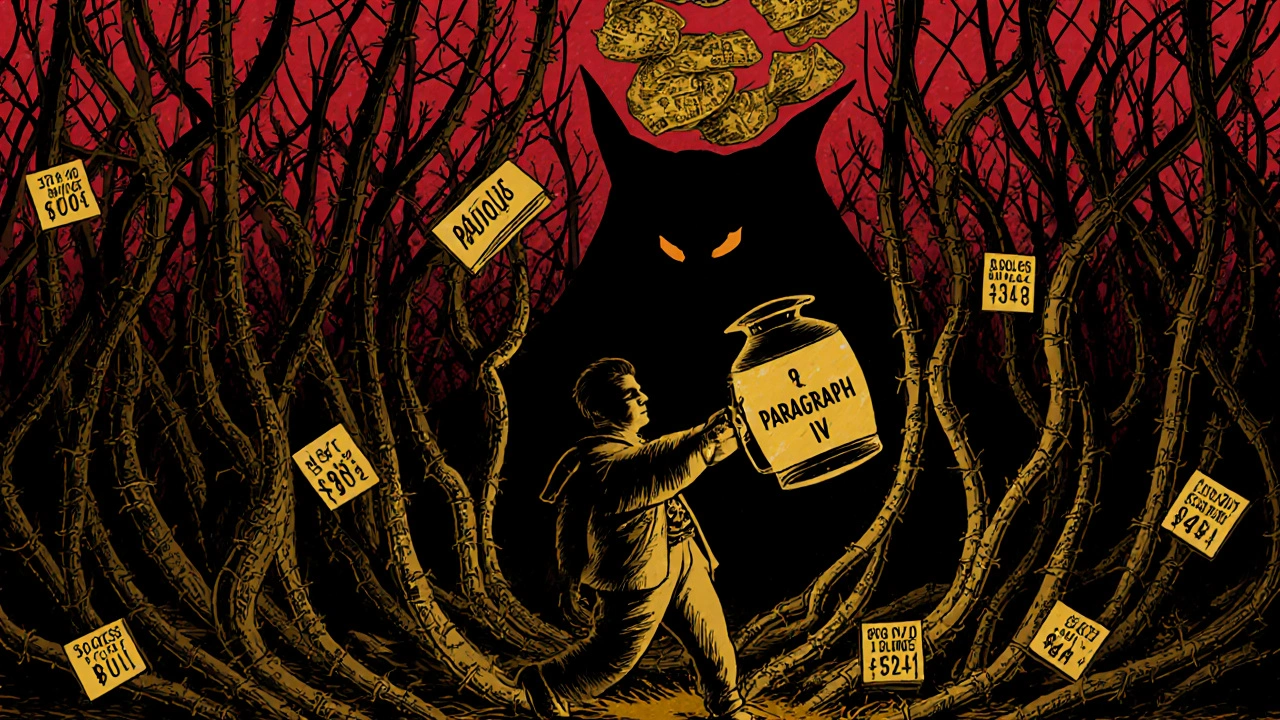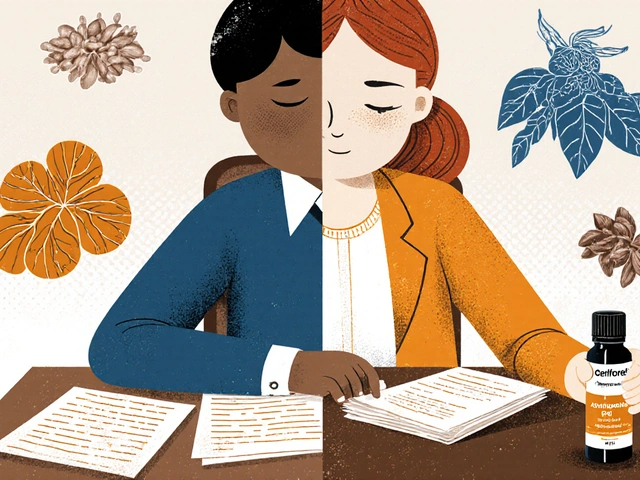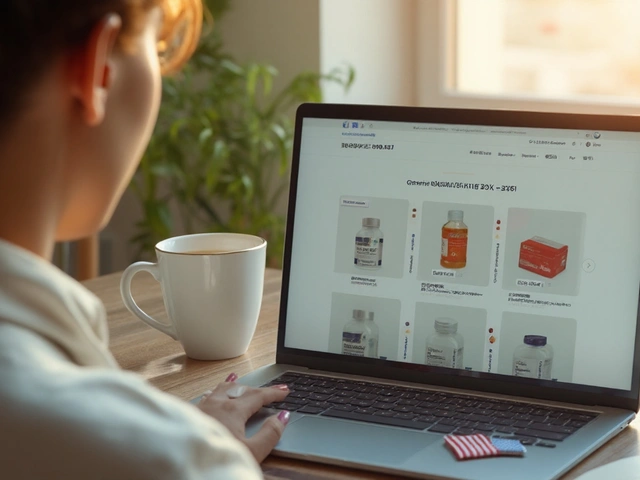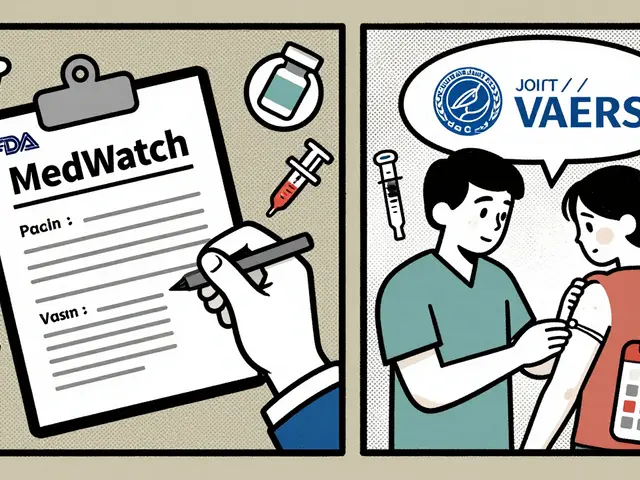
The Hatch-Waxman Act didn’t just change how generic drugs get approved in the U.S.-it rewrote the rules of the entire pharmaceutical market. Before 1984, bringing a generic version of a brand-name drug to market was nearly impossible. The Supreme Court had ruled that even testing a patented drug to get FDA approval counted as patent infringement. That meant generic companies couldn’t start work until the patent expired-often years after the drug hit shelves. The result? Few generics. High prices. Limited access.
What the Hatch-Waxman Act Actually Did
The Drug Price Competition and Patent Term Restoration Act of 1984, better known as the Hatch-Waxman Act, solved two problems at once. It gave brand-name drug makers extra patent time to make up for the years they lost waiting for FDA approval. And it gave generic manufacturers a clear, cheaper path to market. That’s the core of it: a trade. Innovation gets protected. Competition gets enabled.The key tool for generics? The Abbreviated New Drug Application, or ANDA. Instead of repeating expensive clinical trials to prove a drug works, generic makers only had to show their version was bioequivalent-meaning it delivered the same amount of medicine into the bloodstream at the same rate as the brand drug. That cut development costs by about 75%. Suddenly, it made financial sense to enter the market.
But the real game-changer was the legal safe harbor. Section 271(e)(1) of the patent code says generic companies can legally make, test, or use a patented drug during its patent term-so long as the only goal is to gather data for FDA approval. Before this, even preparing for generic entry was a lawsuit waiting to happen. After this? Generic companies could start building their applications five years before a patent expired. That shaved years off the time between patent expiration and generic launch.
How the Patent Game Changed
The Act didn’t just speed up generics-it gave brand companies a way to extend their monopoly. If a drug’s patent clock ran out during FDA review, the company could apply for patent term restoration. The law allowed up to five years of extension, but the average was just 2.6 years. That meant a drug with a 20-year patent might get 22 or 23 years of market exclusivity.But here’s where things got messy. Brand companies started filing more and more patents-not on the actual drug, but on tiny changes: a new coating, a different pill shape, a slightly altered dosing schedule. These are called secondary patents. In 1984, the average drug had 3.5 patents listed in the FDA’s Orange Book. By 2016, that number jumped to 2.7 per drug? Wait-no, that’s wrong. It actually jumped to 14 patents per drug. That’s not a typo. A single drug could have a dozen patents, each one a potential roadblock.
That’s called a patent thicket. And it works. Generic companies now face 4.3 patent challenges per drug on average, up from just 1.2 in 1984. Each challenge can trigger a 30-month automatic delay in FDA approval. Some brands have used this to stretch exclusivity by more than two years beyond the original patent. One generic company executive on Reddit said he’s seen blockbuster drugs tied up in 7- to 10-year legal battles because of 50+ patents. The 180-day exclusivity reward for the first generic filer? Often meaningless when the litigation drags on that long.
The Rise of Pay-for-Delay
Another twist: pay-for-delay deals. Sometimes, instead of fighting in court, brand companies would pay generic makers to stay out of the market. These reverse payment settlements became so common that between 2005 and 2012, they affected 10% of all generic challenges. The FTC called them anti-competitive. Courts eventually ruled they could be illegal-but they didn’t disappear. Even today, they’re a tool in the playbook.Why do generic companies agree? Because litigation is brutal. Legal fees for a single patent challenge can run $15 million to $30 million. And if you lose, you’re out of luck-no market entry, no return. Paying a settlement, even a big one, can still be cheaper than betting everything on a lawsuit.

What the Numbers Say
The impact of Hatch-Waxman is undeniable. In 1984, fewer than 10 generic drugs got FDA approval each year. By 2019, it was 771. Today, 90% of all prescriptions filled in the U.S. are for generics. Yet generics make up only 18% of total drug spending. That’s how powerful competition is. The Association for Accessible Medicines estimates the Act has saved the U.S. healthcare system over $313 billion every year.But the savings aren’t automatic. The Congressional Budget Office found Hatch-Waxman saved $1.18 trillion between 1991 and 2011. But a 2020 government study found patent abuse tactics-like evergreening and pay-for-delay-have added $149 billion to drug spending since 2010. That’s not a glitch. That’s a feature of a system that’s been gamed.
Who’s Winning and Who’s Losing
The market has consolidated. In 2000, the top 10 generic manufacturers controlled 38% of the market. By 2022, that number was 62%. Smaller companies can’t afford the legal and regulatory costs. Only big players with deep pockets can navigate the Orange Book, file ANDAs with 50,000 pages of data, and survive 30-month litigation stays.Brand companies aren’t losing either. The average time from drug approval to generic entry has stretched from 12.8 years in 1984 to 13.2 years today. That’s thanks to patent extensions, secondary patents, and legal delays. Harvard’s Dr. Aaron Kesselheim found Hatch-Waxman extended effective market exclusivity by 1.2 years on average. That’s not a bug-it’s built into the design.

Is the System Broken?
It’s not broken. It’s working exactly as it was designed. The problem is that the design didn’t anticipate how clever companies would get at gaming it. The original compromise was elegant: reward innovation, enable competition. But over 40 years, both sides learned to exploit the loopholes.Brand companies now file patents on trivial changes. Generic companies wait for paydays instead of racing to market. The FDA’s review process, once taking 36 months, is now down to 10 months thanks to user fees-but 43% of ANDAs still get rejected on first review because of messy paperwork or wrong patent listings.
There’s been some reform. The 2022 CREATES Act stopped brand companies from blocking generic makers from getting samples needed for testing. The 2023 Preserve Access to Affordable Generics Act would ban pay-for-delay deals. The FDA is tightening rules on what patents can be listed in the Orange Book. And under GDUFA IV, they’re aiming to cut ANDA review times to 8 months by 2025.
But experts warn: push too hard, and innovation suffers. Japan cut its patent protections in 2018 and saw a 34% drop in new small-molecule drug approvals. The U.S. still leads the world in new drug development. Hatch-Waxman helped make that possible.
What’s Next for Generic Drugs?
The future of the Hatch-Waxman Act isn’t about scrapping it. It’s about fixing the corners that have been bent. The system works when patents are real and litigation is fair. It fails when companies use patents as weapons, not protection.For generic manufacturers, the path is still there-but it’s harder than ever. For brand companies, the clock still ticks, but they’ve learned how to slow it down. For patients, the result is clear: more generics, lower prices, but also more delays and more complexity.
The Hatch-Waxman Act didn’t just create a regulatory process. It created a new kind of market-one where patents, lawsuits, and paperwork are as important as chemistry and biology. It’s not perfect. But without it, most of the drugs you take today would cost 5 to 10 times more.
What is the Hatch-Waxman Act?
The Hatch-Waxman Act, officially the Drug Price Competition and Patent Term Restoration Act of 1984, is a U.S. law that created a balance between brand-name and generic drug companies. It let generic makers use a faster approval process (ANDA) while giving brand companies extra patent time to make up for delays during FDA review.
How does the ANDA process work?
The Abbreviated New Drug Application (ANDA) lets generic drug makers prove their product is bioequivalent to an already-approved brand drug. They don’t need to repeat large clinical trials. Instead, they show their version delivers the same amount of medicine into the bloodstream at the same rate. This cuts development costs by about 75% compared to a full new drug application.
What is a Paragraph IV certification?
A Paragraph IV certification is when a generic company claims that a patent listed in the FDA’s Orange Book is invalid or won’t be infringed. This triggers a 45-day window for the brand company to sue. If they do, FDA approval is automatically delayed for 30 months-unless the court rules faster. This is the main legal tool generic companies use to challenge patents early.
Why do generic drugs cost so much less than brand-name drugs?
Generic drugs cost less because they don’t need to repeat expensive clinical trials. The Hatch-Waxman Act allows them to rely on the brand drug’s safety and efficacy data. They only prove bioequivalence. Development costs drop by 75%, and with multiple generic competitors entering the market, prices often fall to 15% of the brand’s price within six months.
What’s the Orange Book?
The Orange Book, officially the Approved Drug Products with Therapeutic Equivalence Evaluations, is the FDA’s public list of approved drugs and their patents. Generic companies use it to identify which patents they must challenge to enter the market. But the system has been abused-companies now list dozens of weak or irrelevant patents to block competition.
Has the Hatch-Waxman Act been successful?
Yes, but with major caveats. It succeeded in making generics widely available-90% of U.S. prescriptions are now for generics. It saved over $313 billion annually in drug costs. But it also enabled patent thickets, pay-for-delay deals, and extended monopolies. The original balance has been disrupted, and reform is needed to restore its intended purpose.




Aidan McCord-Amasis
November 15, 2025 AT 11:02Generic drugs saved my ass last year - $3 for a month’s supply instead of $300. 🙌
Edward Ward
November 16, 2025 AT 02:04Look, I get why people hate Big Pharma, but Hatch-Waxman was one of the few times Washington actually got something right. The trade-off was elegant: give innovators a little more time to recoup R&D, and give generics a legal highway to market. The system didn’t break - it got hijacked. Patent thickets? Pay-for-delay? Those aren’t features of the law - they’re corporate loopholes exploited by lawyers with PhDs in obstruction. The original ANDA process cut development costs by 75% because it trusted science, not lawsuits. Now we’re stuck in a legal quagmire where a drug with 50 patents takes longer to approve than it took to discover penicillin. And the FDA? They’re drowning in 50,000-page ANDAs written in legalese disguised as pharmacology. The CREATES Act was a start. GDUFA IV is a step. But until we cap the number of patents per drug and ban reverse payments outright, we’re just rearranging deck chairs on the Titanic of pharmaceutical greed.
Shyamal Spadoni
November 16, 2025 AT 15:54u think this is about drugs? nah. its about the feds letting big corp control everythng. the orange book? its a secret list made by pharma to block small guys. they even patent the color of pills. i read somewhere the cia helped design this so we stay docile. also why do u think all the generic makers are owned by big pharma anyway? its all a show. the real medicine is in the shadows. #deepstate #pharmakill
Ogonna Igbo
November 17, 2025 AT 19:53Why does America get to play by its own rules? In Nigeria, we can’t even get basic generics because of patent nonsense. You people invented this law to protect your billion-dollar industries while the rest of the world pays 10x more. You call it innovation? We call it medical colonialism. The Hatch-Waxman Act isn’t a miracle - it’s a weapon. And you’re proud of it? Your system keeps African patients waiting for insulin while your CEOs buy private islands. Wake up.
BABA SABKA
November 18, 2025 AT 18:17Let’s be real: the entire system is a cartel. The Orange Book is a weaponized database, ANDA submissions are engineered to fail, and the 30-month stays are just litigation theater. Generic manufacturers aren’t fighting for access - they’re fighting for survival. The real innovation isn’t in chemistry - it’s in legal engineering. Companies now spend more on patent litigation than R&D. And don’t get me started on pay-for-delay - it’s not a settlement, it’s a bribe with a subpoena. The FDA’s review times improved? Great. But 43% of ANDAs get rejected for paperwork errors? That’s not inefficiency - that’s intentional gatekeeping. This isn’t capitalism. It’s regulated monopoly with a side of bureaucratic sabotage.
Chris Bryan
November 20, 2025 AT 05:25Every time someone praises Hatch-Waxman, they’re ignoring the fact that this law was sold to the public as a win-win - but it was really a Trojan horse for corporate consolidation. The patents on pill coatings? The 14 patents per drug? The 10-year legal battles? That’s not innovation - that’s fraud. And the FDA? They’re just the janitors cleaning up the mess. We’re not talking about a broken system - we’re talking about a system designed to fail the patient so the shareholder wins. And now they want to extend GDUFA? Please. We need to scrap the whole thing and start over with public drug development. No patents. No shareholders. Just medicine.
Jonathan Dobey
November 20, 2025 AT 13:25Ah, the noble dance of capital and chemistry - where molecules become legal instruments and patents morph into feudal fiefdoms. Hatch-Waxman, in its original form, was a Rousseauian social contract: innovation rewarded, competition honored. But now? We live in a postmodern pharmaceutical dystopia where the Orange Book is the new Bible, and Paragraph IV certifications are the heresies that get you excommunicated - with a 30-month exile. The real tragedy isn’t the pay-for-delay deals - it’s that we’ve normalized the absurd. A drug with 50 patents? That’s not a medicine - it’s a labyrinth designed by Kafka’s ghost, staffed by lawyers with Ivy League degrees and zero moral compass. We didn’t just lose the balance - we traded it for a spreadsheet.
ASHISH TURAN
November 22, 2025 AT 01:31Great breakdown. I’ve seen firsthand how long it takes for a generic to hit the market in India - even when patents expire. The U.S. system, despite its flaws, still moves faster than most. The real issue isn’t Hatch-Waxman - it’s enforcement. If the FTC and FDA actually cracked down on patent abuse instead of issuing press releases, we’d see real change. Also, the 180-day exclusivity window should be tied to actual market entry, not legal delays. That would kill a lot of the games.
Ryan Airey
November 23, 2025 AT 17:51Let’s cut the fluff. Hatch-Waxman didn’t create competition - it created a legal casino. Generic companies don’t compete on price or quality - they compete on who can file the most frivolous Paragraph IV certifications and drag out litigation the longest. The 180-day exclusivity isn’t a reward - it’s a bounty for the first lawyer who finds a loophole. And brand companies? They don’t innovate - they litigate. The fact that drug exclusivity has *increased* since 1984 proves this system is a failure. The only winners are the law firms. Everyone else? Just collateral damage.
Hollis Hollywood
November 25, 2025 AT 02:28I just want to say - thank you for writing this. As someone who’s watched my mom struggle to afford her meds for 15 years, this isn’t abstract. It’s personal. The numbers are staggering, but behind every statistic is someone choosing between insulin and rent. I wish more people understood that the real cost of this system isn’t measured in dollars - it’s measured in lives delayed, lives lost, lives quietly suffering because a patent on a pill coating matters more than a human life. I don’t know how to fix it. But I know we can’t keep pretending it’s working. We need to listen to the people who pay the price, not the ones who profit from the loopholes.